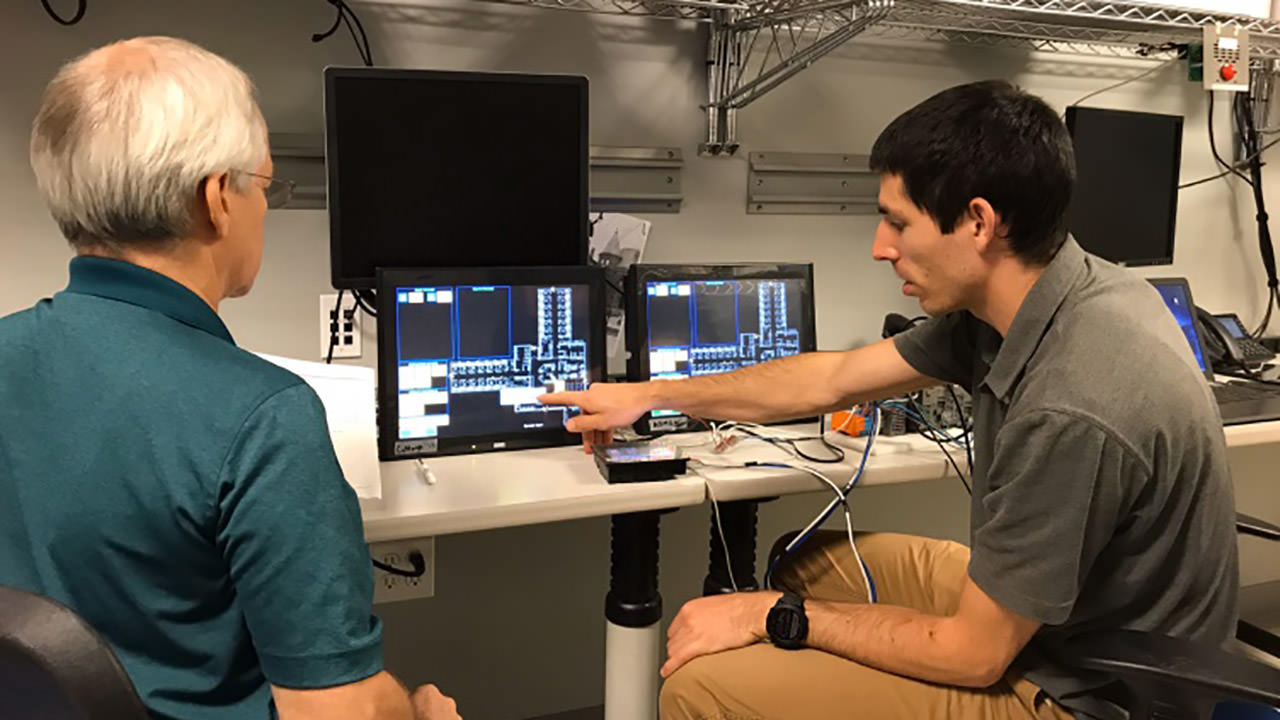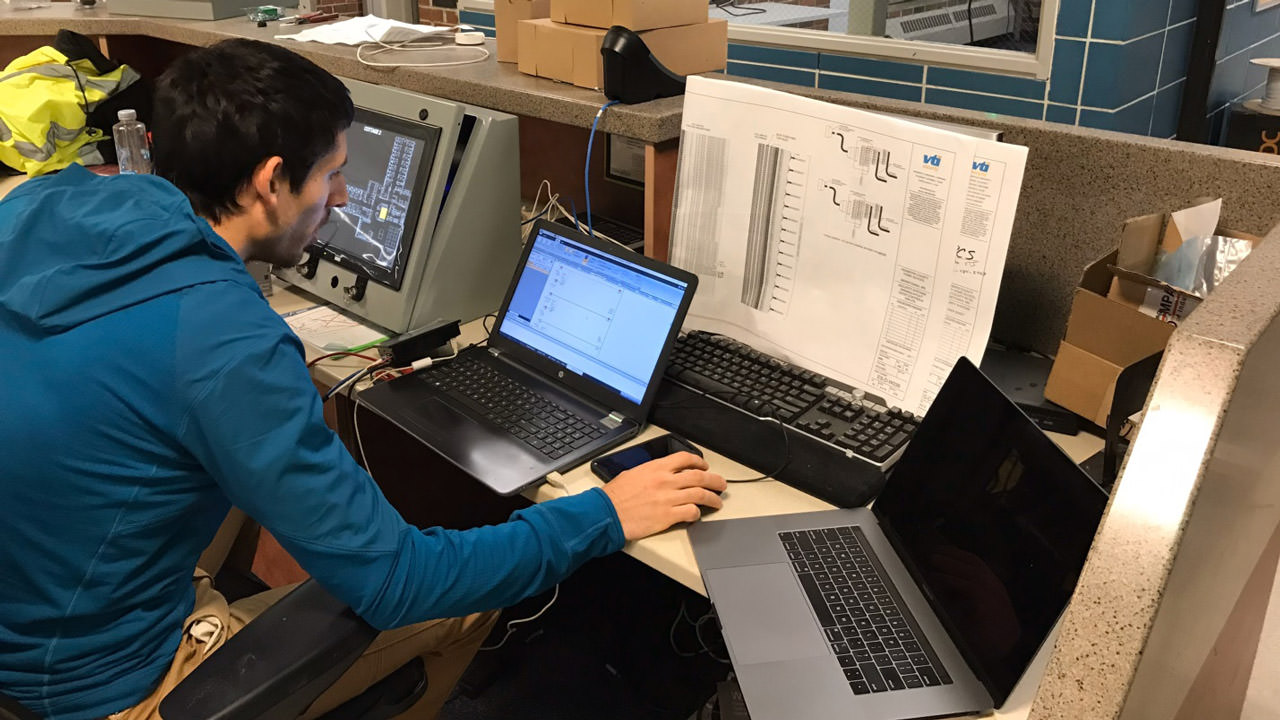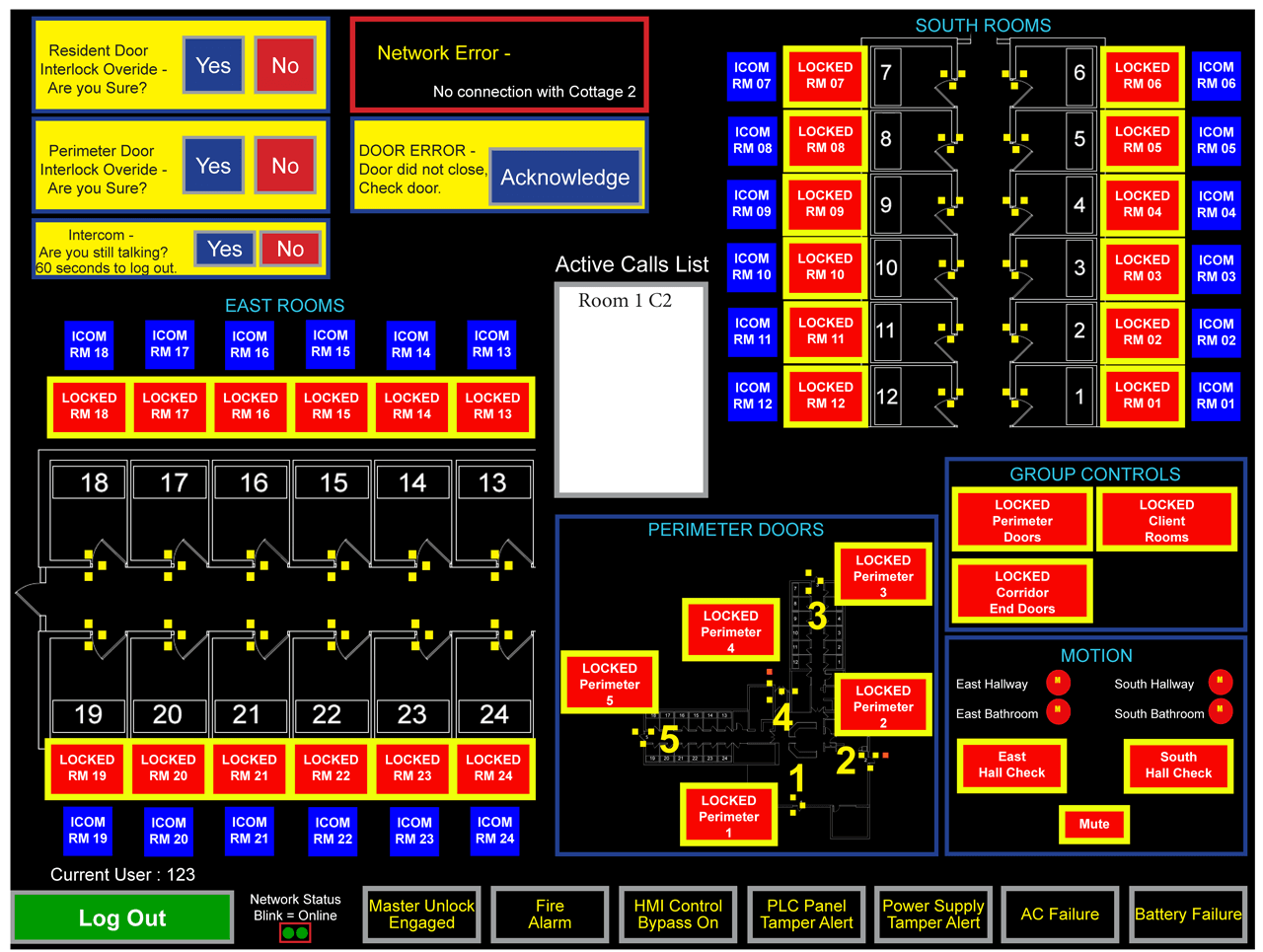ApplicationsSeptember 1, 2020
Lean PLC and HMI system offers facility automation solution

Small and medium facility operators can obtain a comprehensive facility automation system delivering the capabilities they need by choosing the right hardware and software solution. Standard PLCs and HMIs can meet the needs of the facility without complex and expensive server hardware, or a datacenter environment.
A patient care facility needed security but was plagued by the challenges of aging infrastructure. Upgrading to a modern setup of integrated door security and intercom functions was not a question of if, but when. But the facility was hard-pressed to achieve the functionality it needed at reasonable cost.
Fortunately for this end user, a systems integrator was able to design and program an ideal system: a lean programmable logic controller (PLC) and human machine interface (HMI) automation system based on IDEC hardware and software—complete with datalogging and enterprise-zone management—without the cost, complexity, and power-consuming burden of server infrastructure in a datacenter.
Legacy system at end of lifecycle

Integrator configures MicroSmart PLCs and HMIs to meet door security and intercom requirements.
This customer’s previous arrangement used hardwired relay logic and an old computer system to control the doors and intercoms. Not exempt from the fate of system lifecycles, these two separate systems—one for door security and another for call connectivity—had served their purposes well for the facility but were becoming increasingly prone to the frailties of aging equipment.
The difficulty for the facility was not finding a system to meet their technical needs as the industrial control systems market is dominated by overdesigned hardware and software solutions able to translate data across languages, protocols, networks, and platforms. Some were relatively open, while others were proprietary and industry-specific.
Instead, the challenge was finding the required functionality in a user-friendly platform, designed to fit their requirements without unneeded frills. The facility needed to combine the door security and intercom systems to operate in tandem and ensure accurate logging of all events, but they did not want a proprietary, overdesigned solution. Additionally, they needed a system that would recover quickly following a power failure and come back online more rapidly than those using enterprise servers.
Capable PLCs and HMIs
To meet their goals, facility personnel engaged the help of an integrator with prior experience using IDEC PLC and HMI hardware. After brainstorming with the stakeholders and engineering a prospective system architecture, the team confirmed MicroSmart FC6A PLCs and HG series HMIs would meet the precise needs of the facility.
The team took advantage of the MicroSmart’s multi-communication protocol capability:
- To translate ASCII RS-232 serial data sent and received by the existing administration building intercom master
- Modbus TCP/IP data used to connect PLCs to each other for transfer of information and passwords
- Ethernet was also used for communication between the deployed PLCs and HMIs
HG series HMIs offer built-in event logging, which the team configured so the primary administrative HMI kept a record of event history for viewing on the facility’s PC. Because all monitoring, control, and historizing functionality was performed by the PLC and HMI, system recovery following loss of power was quick, typically requiring only about 10 seconds. This is in contrast to a system architected with a PC-based HMI, where reboot times could range into minutes.
It was necessary for control functions to be available from HMIs at each local building and also from the main administration building, coordinated so they would not interfere with each other. This included all door control, alarm and motion device monitoring, and intercom connections. For example, if a call was taken from the administration building, the cottage HMI would show the call was active and no longer needed to be answered.
Therefore, the team created a system design with PLC and HMI at each location, and then networked the two locations together. One PLC interfaces with the intercom system, which also uses its own network connections. In case of network communication loss between the administration building and a local cottage, each cottage control area maintains full control of its equipment. This approach provides the required control even if there are localized failures.
The integrator also incorporated multiple digital devices into the automation system architecture. Each resident room has a call button, multiple indicator lights, a magnetic lock bond sensor, and a keyswitch.
When a resident requires assistance, they press their room’s call button, which engages a digital input (DI) at the local cottage PLC. That sends a confirmation to the resident that their request has been received by energizing a digital output (DO) to illuminate a band around the button. The PLC simultaneously sends a signal over the Ethernet network to the cottage’s HMI, and to the master PLC and HMI in the administration building.
It is then up to an operator, either in the cottage or administration building, to respond to the call request by pressing a button on the HMI. If the call is answered from the cottage, the local PLC sends an Ethernet command to the cottage IP intercom master to establish a link with the resident’s intercom where the call was placed. If the call is answered from the administration building master HMI, the master PLC sends a serial ASCII message over the RS-232 interface to the analog intercom master to establish a connection with the cottage IP intercom master, which connects to the resident’s intercom.
Once the endpoints of the intercom are connected, the PLC energizes a DO illuminating a green light in the resident’s room to notify him or her that the call is active. Depending on the call, the operator has the choice to unlock the resident’s door (de-energizing the magnetic lock device holding the door closed) or to end the call, activating either via an HMI touchscreen button. A door unlock command triggers the cottage PLC maglock DO, and a command to end the call is routed over the network to the intercom devices in the same manner as when the call was first initiated.
The current status of each door with a magnetic lock bond sensor can be monitored at the HMI, and the HMI generates an alarm if a door which is supposed to be locked is found to be open. Each hallway motion sensor status is also displayed on the HMI.
In addition to the ability to remotely unlock a resident’s door through the HMI, an operator may also unlock a door locally using a keyswitch, which causes the local cottage PLC to deenergize the maglock on the particular door. Perimeter doors utilize additional I/O, allowing staff with RFID keycards to unlock exterior doors via badge and card readers. The card readers reside on a separate network and, if presented with proper credentials, trigger a DI detected by the local cottage PLC, causing the appropriate door maglock to disengage. All of the call request, call answer, remote unlock, keyswitch unlock and card reader unlock events are stored in the HMI’s native database and are viewable on the HMI or via the administration PC.
As important as it is to prevent unauthorized door unlocks, the team also needed to ensure safety of residents and personnel in the case of a catastrophic event. To achieve this, the integrator connected the fire alarm for each building into the PLC network. As this is a multi-building deployment, only the doors in the building impacted by a fire are unlocked, while the other buildings maintain normal operation.
Upon a return to normal conditions and when the fire alarm condition has been cleared, an operator presses the fire alarm reset button on the HMI to resume the standard door lock protocol.

HMI screenshot based on geographical CAD drawing layout indicates door lock, motion detection, and call status of several resident rooms and hallways.
Programming flexibility
The IDEC Automation Organizer software includes a rich variety of graphical and programming functions and features. It is also easy to use, customize, and modify.
This benefited the team, as shortly after the system went “live” in full operation, the end user decided a different HMI arrangement would suit them better. The integrator was able to make some quick adjustments in the HMI designer and produce a set of graphics directly in line with the site CAD layout, which was the arrangement the end user preferred.
Added benefits
To prevent unauthorized system access, the integrator created a database capable of allowing access by over 100 authorized users, with password protection. A user must be logged in to answer calls or unlock doors from the HMI.
After the signed-in user logs out or an auto-timeout period elapses due to inactivity, the HMI reverts to view-only mode, requiring an operator to log in prior to allowing user control. The user repository and the previously mentioned event log database are features of special note that are normally only available in PC-based platforms.
Interfacing directly with the facility’s legacy analog TouchLine intercom was possible because of the built-in communication capabilities of the IDEC PLC. This is noteworthy in any PLC, let alone in a compact model. Most compact PLCs support fewer protocols and might require separate gateway devices to translate additional protocols, adding to hardware and configuration complexity and cost.
Into the future with confidence
The team was able to architect an agile automation system using MicroSmart FC6A PLCs and HG series HMIs to meet the needs of the facility without complex and expensive server hardware or a datacenter environment. The programming is easy to configure, adjust, and scale—and the automation system comes back online quickly following a power failure, a key feature for the end user.
Following the success of this project, the end user is eager to deploy similar setups in their other facilities. This deployment serves as an example of the advanced automation and datalogging possible without the implementation of a high-cost, maintenance-heavy, and slow reboot server infrastructure. IDEC PLC and HMI products provide most of the capabilities of such a system, and added benefits important for this facility.

